So, is anyone else out there watching Hulu’s TV horror anthology series Into the Dark?
I haven’t heard much hubbub about it, but I also feel like Hulu hasn’t been featuring it as much as they could. They tout each episode for the week or so after it releases, but it seems like then they’re buried under something new. Maybe that’s because every “chapter” is centered around the month/major holiday closest to its release. If so, then I think they’re either underestimating the quality of the series or being incredibly shortsighted. Possibly both.
For one thing, these are Blumhouse Productions, and the studio already has one hell of a track record. They made their first big splash back in 2009 with Paranormal Activity. Since then, they’ve mostly been killing it (pun intended), featuring some of the highest-grossing and/or critically acclaimed horror movies in the last decade: The Purge series, the Insidious series, Sinister, Oculus, The Visit, Happy Death Day, Get Out, Us. They’ve also contributed to some non-horror hits, such as Whiplash and BlacKkKlansman.
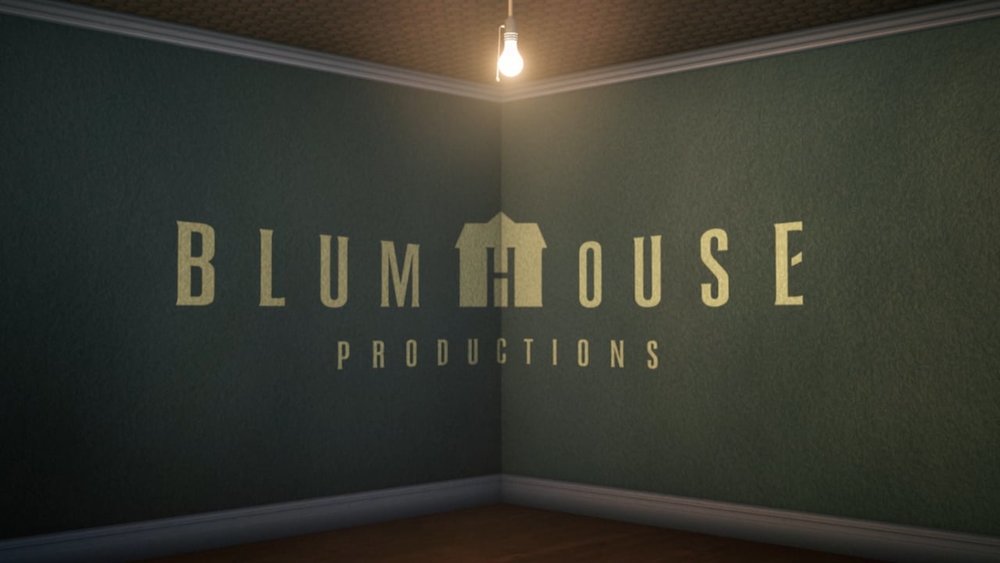
At any rate, Jason Blum — the founder and main driving force behind Blumhouse — started the company with the idea of specializing in high-quality, micro-budget projects. He was also interested in funding passion projects and giving directors complete creative control. Needless to say, things have been going pretty well for Blum, since he’s been nominated for both Academy and Emmy Awards, won a Peabody, and most of his films have made back at least twice their production budgets. At least. For example, Paranormal Activity cost $15,000 to produce and grossed $193.4 million at the box office, making it one of the most profitable films of all time.
(Which is not to say that every Blumhouse has been a hit. I think we’ve all just decided to pretend that the 2015 film adaptation of Jem and Holograms never happened, right?)
Of course, Blumhouse Productions still has room to grow. While their list of projects with female and/or POC protagonists — and antagonists — is impressive, their list of female writers and directors is rather thin. When Blum was first called out on that, he reacted defensively, saying their just weren’t that many female horror directors out there. He’s since recanted his comment, calling it “stupid,” and there do seem to be more women writing and directing for Blumhouse Productions. Not a ton, but more.
Ah, but I have come here to praise Blumhouse Productions and Hulu, not to bury them. And so, let us shift to the subject at hand. Each episode in the anthology is about 90 minutes long and, as mentioned above, centers around a specific holiday. Each episode also features a different flavor of horror, which I think is a treat for nerds who appreciate the sometimes subtle and yet wide range of the genre.
The following reviews are spoiler free!
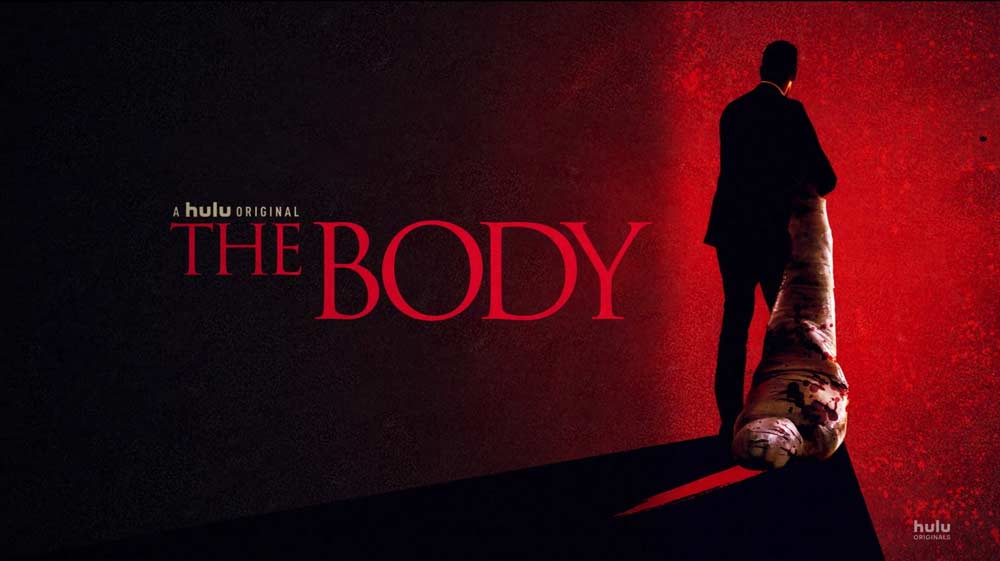 Episode 1: The Body (October/Halloween)
Episode 1: The Body (October/Halloween)
Written by Paul Fisher and Paul Davis
Directed by Paul Davis
Wilkes, a British hitman played by Tom Bateman (no relation to Jason or Justine), is on his way to dispose of his latest victim when he discovers his car has been vandalized: toilet-papered, Silly Stringed, slashed tires, etc. While he’s standing on the street, contemplating his options, he gets roped into attending a Halloween party. (The body is wrapped in cellophane and, because it’s Halloween, is assumed to be a prop.) At the party, he meets a smart, beautiful young woman named Maggie (Rebecca Rittenhouse) dressed as Marie Antoinette, and unlike just about everyone else, she isn’t intimidated by Wilkes, even after she and the group who invited him to the party discover his true profession/nature.
Wilkes is arguably the main character of the episode, but Maggie is far more layered and intriguing. She’s brilliant and bored — a strong woman tired of propping up weaker men — and Wilkes’ confidence, competence, and unique perspective on the human condition draw her to him like a moth to a flame.
For the most part, I would categorize this episode as splatter film, with a soupçon of Gothic horror sprinkled over the top. The action is a bit slow to start, but once it does, there is both gore and graphic violence, including some pretty gnarly on-screen kills, and Wilkes is a textbook villain in the vein of a Jason or Michael Myers — soulless, relentless, and seemingly unstoppable. All-in-all, a solid first entry for a horror anthology.
Overall: 7 out of 10
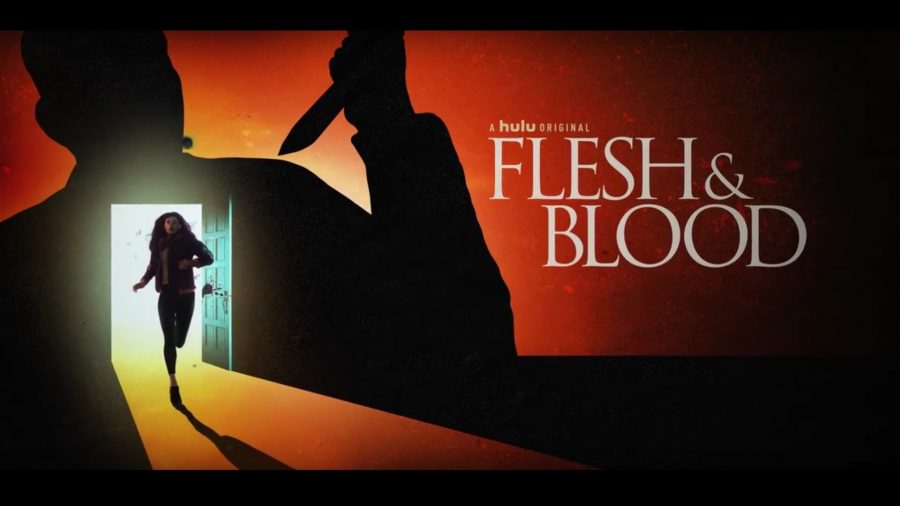 Episode 2: Flesh & Blood (November/Thanksgiving)
Episode 2: Flesh & Blood (November/Thanksgiving)
Written by Louis Ackerman
Directed by Patrick Lussier
After the unsolved murder of her mother, only child Kimberly Tooms (Diana Silvers) develops agoraphobia and is trapped in her house with her father (Dermot Mulroney), a man obsessed with both his daughter’s mental health and home renovation. Kim’s dad gives her a necklace for her birthday and later, while watching the news, she notices a seemingly identical necklace in a picture of a missing girl. When she asks her father about the necklace’s origins, he can’t seem to give her a straight answer, and that’s when her fear begins shifting from the outside in.
Flesh & Blood is a good old domestic horror, taking a supposedly safe space — home — and turning it into a dangerous and frightening environment. Kim’s severe agoraphobia creates a wonderful sense of isolation, and her dad’s penchant for demolition skews the house’s layout, enhancing the viewer’s sense of unease.
There are some shining moments in this episode, but the tension is pulled past its breaking point, and when the climax finally arrives, it feels too long in coming. Mulroney is also let a little too far off the leash, eventually chewing the scenery down to nubbins.
Overall: 5 out of 10
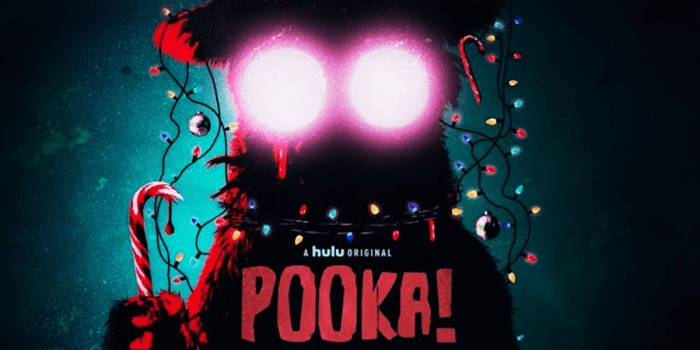 Episode 3: Pooka! (December/Christmas)
Episode 3: Pooka! (December/Christmas)
Written by Gerald Olson
Directed by Nacho Vigalondo
Wilson, an out-of-work actor played by Nyasha Hatendi, is offered a lucrative but anonymous role as the costumed mascot for the season’s must-have toy, Pooka. He takes the job, but, from the very first moment he puts on the costume, an unbreakable and twisted bond is formed between Wilson and Pooka.
Pooka is wonderfully designed, straddling the line between cute and creepy. It has large eyes, devoid of both pupils and irises; an empty, oval-shaped mouth that neither smiles nor frowns; a familiar yet nonspecific animalistic build (Is it a bear? A dog? A rabbit?); an unarticulated neck; and a bloodred circle on its belly. As the character, Wilson performs a weird, repetitive dance to the toy’s unsettling jingle — I don’t know musical terms, but the song shifts back and forth from a pleasant, catchy melody to an unpleasant one, and Pooka’s main feature is that it records and repeats back phrases spoken to it at random. Sometimes, Pooka’s eyes turn a friendly blue and it says the words in a high, friendly tone. Other times, Pooka’s eyes turn red and it growls out the repeated phrase in a mean, mocking voice.
This episode was a fantastic surprise for me. I love a good psychological horror story, and this one was not only well-written and acted, it genuinely freaked me out. The premise is certainly not new, but it’s executed exceptionally well, creating the first real standout episode for the series.
Overall: 10 out of 10
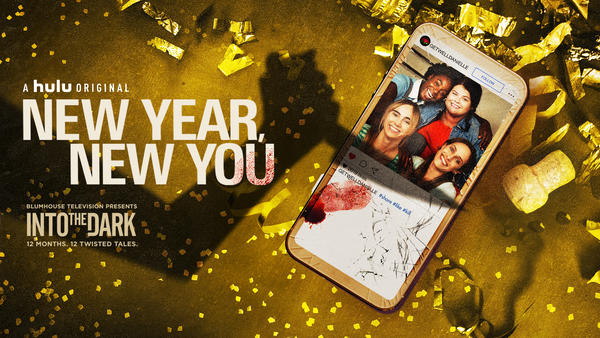 Episode 4: New Year, New You (January/New Year)
Episode 4: New Year, New You (January/New Year)
Story by Sophia Takal and Adam Gaines, Teleplay by Adam Gaines
Directed by Sophia Takal
In this episode, four high-school besties return to the childhood home of Alexis (Suki Waterhouse) to catch up, say goodbye to the soon-to-be sold estate, and ring in the new year. Long story short: This is revenge horror. One of the quartet, Chloe (Melissa Bergland), has become a media maven/lifestyle guru, but Alexis views this success as unfair and wants to make Chloe pay for once bullying a girl into committing suicide.
While this episode does pass the Bechdel Test and does have some interesting things to say about the inherently hectoring nature of aspirational branding, it also falls back on some annoying tropes, such as killing off the one POC and both gay women. Not to mention the whole “women fighting over success” trope. Granted, the fight ranges beyond Chloe’s wealth and notoriety, but the story eventually comes full circle, returning to fame and followers as Alexis’ raison d’être.
Overall: 4 out of 10
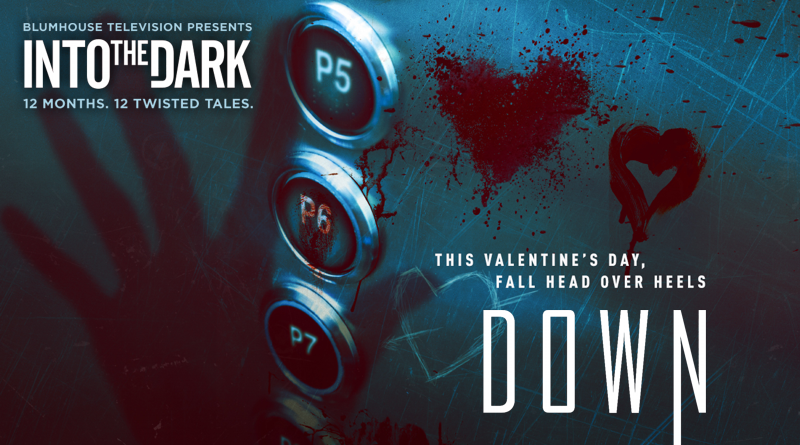 Episode 5: Down (February/Valentine’s Day)
Episode 5: Down (February/Valentine’s Day)
Written by Kent Kubena
Directed by Daniel Stamm
Two workaholics leave their jobs late on Friday, February 13 and become trapped together in an elevator over a three-day weekend. Jennifer (Natalie Martinez) and Guy (Matt Lauria) are at first understandably upset about not only being trapped but being trapped with a stranger. However, after enduring a mortifying yet sweet moment where Natalie has to pee into an empty water bottle while Guy is both gentlemanly and understanding, the walls of elevator-based propriety come down, and the captives become fast friends. But what starts out as a fairly charming rom-com premise soon turns into a nightmare when Natalie discovers Guy isn’t the kind, nonthreatening accountant he claimed to be.
This is a bottle episode that plays on the very real fear most women have of being trapped in a confined space with a violent man. The filmmakers do a nice job of playing with the claustrophobic atmosphere, and both Martinez and Lauria turn in excellent performances. I do have to ding the episode for randomly introducing a black woman late in the game and then immediately killing her off. (An abhorrent trope that, like the Halloween franchise, needs to be retired for good.)
In the end, though, Down gets more right than it does wrong, mingling real-life horror with fiction and providing a compelling commentary on white, heterosexual, cis-gender male entitlement.
Overall: 8 out of 10
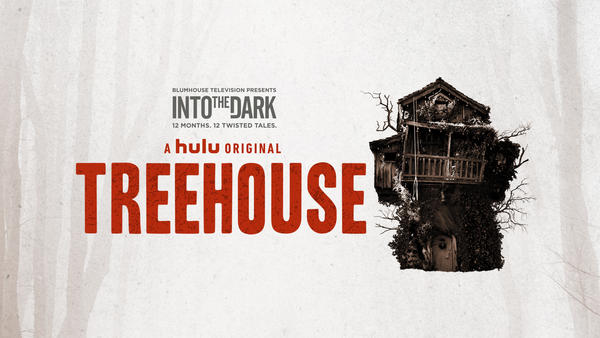 Episode 6: Treehouse (March/International Women’s Day)
Episode 6: Treehouse (March/International Women’s Day)
Written by James Roday and Todd Harthan
Directed by James Roday
First off, let me say how relieved I was to discover this episode didn’t center around St. Patrick’s Day! I’ve seen all the Leprechaun movies (yes, all of them), and that very shallow well ran dry about ten minutes into the first film, amirite?
Anyway, Treehouse is about celebrity chef Peter Rake (Jimmi Simpson) returning to his childhood home. (This trope is one I really don’t mind because it’s really just a jumping off point with myriad possibilities.) The reason for the trip is two-fold: He’s both fleeing some sort of scandal (#metoo) and reuniting with his twin sister Gwen (Amanda Walsh), whom he hasn’t spoken to in three years. Unfortunately, she’s called away on business pretty quickly, and Peter is left alone with Agnes (Nancy Linehan Charles), the elderly housekeeper who’s worked there since Gwen and Peter’s youth.
Thankfully, just when it seems like Peter will have nothing to do but stare at his deceased father’s artwork, which now covers almost every wall of the estate, and cook, a young woman comes to his door looking for help. Kara (Juliana Guill) and her friends are having a bachelorette party nearby when their power goes out. At first, Peter simply offers the candles and flashlights Kara asks for (as well as some flirtatious banter, which Kara returns), but, after another run-in near an old treehouse on the Rake property, Peter invites Kara and her friends over for dinner. Recognizing him for the chef that he is, they accept.
Dinner goes about as expected. Then Peter drinks too much and passes out, waking up to a supernatural nightmare.
This episode returns again and again to the nature of womanhood, to the price and perils women have endured for centuries all over the world. Although most of the story is told through the male gaze, it plays with the historically skewed view of strong women, especially strong groups of women, and it portrays the female perspective with sympathy and a deep understanding of the shared pains and joys of womanhood, most of which tend to escape even the most enlightened of men. Kudos to Roday and Harthan for that. However, they miss out on extra kudos for not finding a female director. #ownvoices
That said, this is an empowering piece for every viewer because not only does it portray a group of diverse and complex women exacting well-earned revenge, it also suggests that our misogynistic rape culture isn’t immutable. Sure, especially with the current state of the world, it may seem like women have been taking two steps forward and then being forced ten steps back. But, as I discussed in my reaction to Us, Treehouse is the episode that women — and truly woke male allies — deserve.
Overall: 9 out of 10
I’ll be back in September to review the second half of Into the Dark. Until then, I’d like to dedicate this post to a couple of dear friends and fellow spec fic nerds, Rhonda Nicol and Jason Blatt. I wish I could have discussed this series with you both. My life (and my commentary) are both poorer for your absence.

So yeah, I totally forgot we watched THE BODY!!!! We thought we’d keep up each month, but by time we got around to November’s, it was after Thanksgiving, and it felt too late to watch so we forgot about the series. Thanks for breaking it down for each film!
And you’re right, Hulu isn’t doing enough to promote this.